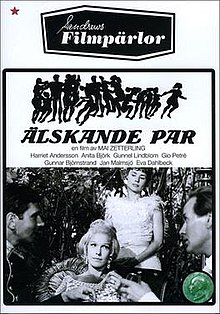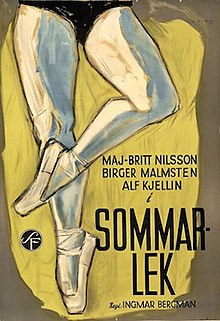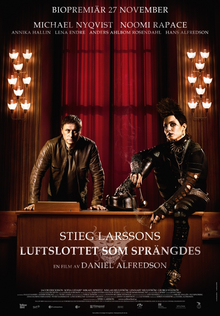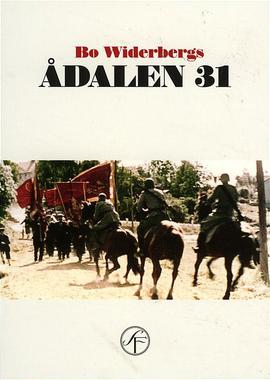Introduction to Swedish cinema
Sweden’s first screening of moving images took place in Malmö in June 1896, and the country’s earliest film shows were sponsored by religious organizations. Early actualities include a 1898 film of King Oscar II opening the General Art and Industry Exhibition in Stockholm and the fiction film Slagsmål i gamla Stockholm/Drunken Brawl in Old Stockholm (1897). 1907 saw the founding of the studio Svenska Biografteatern, specializing in quality productions; in later years it took over a number of competing companies and in 1919 became Svensk Filmindustri (SF), with interests in distribution and exhibition as well as in production: SF remains the industry leader. Sweden’s neutrality in World War I proved favourable for the domestic film industry, and the years between 1914 and 1921—a period notable for rural melodramas, remakes of Danish erotic melodramas (see Denmark, film in), and adaptations of literary works (Tösen från Stormyrtorpet/The Girl from the Marsh Croft (Victor Sjöström, 1917))—are regarded as a golden age in early Swedish cinema. In the 1920s there followed key works by such prominent directors as Sjöström (Körkarlen/The Phantom Carriage (1921)) and Mauritz Stiller (Gösta Berlings saga/The Atonement of Gösta Berling (1924)). After a locally-made sound-on-disc film, Säg det i toner/The Dream Waltz (Edvin Adolphson and Julius Jaenzon, 1929), proved a box-office success, the US company Paramount, in a bid to capture the lively Swedish market, started making Swedish-language films at its Paris (Joinville) studio. In the 1930s, when Sweden was moving through a period of rapid modernization and traditional values were competing with utopian visions of a future Folkhem (people’s home, or welfare state), uncertainties about the future figure in themes and motifs of ethnocentric or nationalistic films such as Gustaf Edgren’s Valborgsmässoafton/Walpurgis Night (1936). ...
Kuhn, A., & Westwell, G. (2020). Sweden, film in. In A Dictionary of Film Studies. : Oxford University Press. Retrieved 31 May. 2021
In the library's collections/Searching the online catalog
-
motion pictures swedenThe call number range is PN 1993.5 .S8 located on Baker Level 4.
Introductory reading(s)
-
Swedish film: an introduction and reader by
Call Number: eBookISBN: 9789185509362A compilation of carefully selected articles written by international film scholars, this record provides an in-depth look into the history of Swedish film. This scholarly account covers various phenomena, including the early screenings at the turn of the century, Swedish censorship, the golden age of silent films, 1930s; comedies and melodramas, documentaries, pornography, and experimental films.
Selected book title(s)
-
Cultural practice of immigrant filmmaking: minor immigrant cinemas in Sweden 1950-1990 by
Call Number: eBookISBN: 9781783209866Based on a research project funded by the Swedish Research Council, this book examines 40 years of post-war independent immigrant filmmaking in Sweden. John Sundholm and Lars Gustaf Andersson consider the creativity that lies in the state of exile, offering analyses of over 50 rarely seen immigrant films that would otherwise remain invisible and unarchived. They shed light on the complex web of personal, economic, and cultural circumstances that surround migrant filmmaking, discuss associations that became important sites of self-organization for exiled filmmakers, and explore the cultural practice of minor immigrant cinema archiving. The Cultural Practice of Immigrant Filmmaking applies film theory to immigrant filmmaking in a transnational context, exploring how immigrant filmmakers use film to find a place in a new cultural situation. -
A history of Swedish experimental film culture: from early animation to video art by
Call Number: Baker-Berry PN 1995.9 .E96 A485 2010ISBN: 9780861966998This first-ever study of Swedish experimental film represents the results of a Swedish Research Council initiative in 2006-2008. The essays address the institutions, filmmakers, and films important to the history of experimental film in Sweden, and place this history in larger artistic and socio-cultural contexts. The authors look at the work of the Independent Film Group, regional Fluxus groups, E.A.T., and figures such as Viking Eggeling, Rune Hagberg, Pontus Hultén, Öyvind Fahlström, Leo Reis, Bo Jonsson, and Åke Karlung. -
Making the invisible visible: reclaiming women's agency in Swedish film history and beyond by
Call Number: Baker-Berry PN 1993.5 .S8 M35 2019ISBN: 9789188661852To describe women in film history as invisible may seem strange as throughout film history, women on the silver screen have given audiences their version of what it is to be a woman. And as film stars they have always been associated with the glamour of the film industry -- the living embodiment of female attraction and pleasure. In Making the Invisible Visible, however, a group of researchers disvsect the underrepresentation of women in areas of film culture often overlooked. Despite some significant differences -- between countries, between eras, between kinds of job -- production teams and film crews have almost always been men. Still today, many film professions are dominated by men. The authors explore women's scope for action in a variety of professional roles, based for example on discussions of LGBTQ+ identities in the film industry. ... -
Swedish cinema and the sexual revolution: critical essays by
Call Number: Baker-Berry PN 1995.9 .S45 S94 2016ISBN: 9781476665443Swedish cinema became recognized for daring representations of sexuality with such films as One Summer of Happiness (1951), The Silence (1963), I Am Curious (Yellow) (1967) and a wave of sex films in the late 1960s and 1970s. The association between Swedish film and sexuality shows up frequently in popular culture. From Taxi Driver (1976) to Mad Men (2007-2015), dirty Swedish movie references abound. Yet the connection has attracted little critical attention. In this collection of new essays, Swedish and American scholars go beyond popular misconceptions to explore the origins, influences and reception of sexuality in Swedish cinema during the "sexual revolution" on both sides of the Atlantic. ... -
The visible wall: Jews and other ethnic outsiders in Swedish film by
Call Number: eBookISBN: 9780809321643Rochelle Wright provides the first historical overview and analysis of the manner in which Jews and other ethnic outsiders have been depicted in Swedish film from 1930 to the present. Focusing on films produced in Sweden for primarily Swedish audiences, Wright analyzes how the portrayal of the relatively small Jewish minority has evolved over the years. She compares the images of Jews in Swedish film with those of other ethnic subcultures: long-term resident communities such as "tattare "(travelers, an indigenous pariah group often confused with gypsies), Finns, the Sami, and recent immigrant populations such as Greeks, Italians, Turks, and Yugoslavians. ... -
Welcome home Mr Swanson: Swedish emigrants and Swedishness on film by
Call Number: eBookISBN: 9789187675119Between 1840 and 1940, more than one million people emigrated from Sweden to America. The fact that so many chose to leave to seek a better life across the Atlantic was a major trauma for the Swedish nation. Filmmakers were not slow to pick up on an exodus that proved to be of lasting importance for the Swedes' national identity. In Welcome Home Mr Swanson, film studies scholar Ann-Kristin Wallengren analyzes the ways in which Swedish emigrants and Swedish-American returnees are depicted in Swedish film between 1910 and 1950, continuing on to recent films and television shows. Were Sweden's emigrants seen as national traitors or as brave trailblazers who might return home with modern ideas? ...
Other library resource(s)
-
Scandinavian film from Oxford Bibliographies Online by
Call Number: Electronic resourceISBN: 9780199791286This bibliography covers the cinemas of Denmark, Finland, Iceland, Norway, and Sweden. These are usually called the Nordic countries, while Scandinavia is sometimes defined more narrowly, with reference to geography or linguistics. Here, however, Scandinavian and Nordic are used as synonyms. While the Nordic countries certainly share parts of their film histories with each other, there are also notable differences.
Selected movie titles
Find more Swedish language films in the library's online catalog.
-
Cries and whispers = [Viskningar och rop]: a film by
Call Number: Jones Media DVD #940ISBN: 9780780024038A story of four women's search for spiritual peace. Agnes, a spinster who lives with her housekeeper, is dying of cancer, and is visited one last time by her two sisters, Karin and Maria. These two become entangled in feelings of jealousy, manipulation and selfishness. Yet Agnes, tortured by cancer, is able to transcend her sisters' pettiness to remember moments of staggering beauty as well as horror. -
 Körkarlen = The phantom carriage
by
Call Number: Jones Media DVD #13651ISBN: 9781604654752The last person to die on New Year's Eve before the clock strikes twelve is doomed to take the reins of Death's chariot and work tirelessly collecting fresh souls for the next year. So says the legend that drives the Phantom Carriage, about an alcoholic, abusive ne'er-do-well who is shown the error of his ways and the pure-of-heart Salvation Army sister who believes in his redemption.
Körkarlen = The phantom carriage
by
Call Number: Jones Media DVD #13651ISBN: 9781604654752The last person to die on New Year's Eve before the clock strikes twelve is doomed to take the reins of Death's chariot and work tirelessly collecting fresh souls for the next year. So says the legend that drives the Phantom Carriage, about an alcoholic, abusive ne'er-do-well who is shown the error of his ways and the pure-of-heart Salvation Army sister who believes in his redemption. -
 Loving couples = Älskande par
by
Call Number: Jones Media DVD #18801ISBN: 9781552595664Three mothers-to-be take a look back on their romantic lives as they are about to give birth. Each is from a different social class and each one has a different take on becoming a mother.
Loving couples = Älskande par
by
Call Number: Jones Media DVD #18801ISBN: 9781552595664Three mothers-to-be take a look back on their romantic lives as they are about to give birth. Each is from a different social class and each one has a different take on becoming a mother. -
 Sommarlek = Summer interlude
by
Call Number: Jones Media DVD #14905ISBN: 9781604655919Marie is an accomplished ballet dancer haunted by her tragic youthful affair with a shy, handsome student. Her memories of the rocky shores of Stockholm's outer archipelago mingle with scenes from her gloomy present, most of them set in the dark backstage environs of the theater where she works.
Sommarlek = Summer interlude
by
Call Number: Jones Media DVD #14905ISBN: 9781604655919Marie is an accomplished ballet dancer haunted by her tragic youthful affair with a shy, handsome student. Her memories of the rocky shores of Stockholm's outer archipelago mingle with scenes from her gloomy present, most of them set in the dark backstage environs of the theater where she works. -
 Stieg Larsson's Luftslottet som sprängdes = The girl who kicked the hornet's nest
by
Call Number: Jones Media DVD #11616The final installment of Stieg Larsson's 'Millennium' trilogy. Lisbeth Salander is fighting for her life in more ways than one. In an intensive care unit and charged with three murders, she will have to not only prove her innocence, but also identify and denounce the same corrupt government institutions that nearly destroyed her life. Once upon a time, she was a victim. Now, Lisbeth Salander is fighting back.
Stieg Larsson's Luftslottet som sprängdes = The girl who kicked the hornet's nest
by
Call Number: Jones Media DVD #11616The final installment of Stieg Larsson's 'Millennium' trilogy. Lisbeth Salander is fighting for her life in more ways than one. In an intensive care unit and charged with three murders, she will have to not only prove her innocence, but also identify and denounce the same corrupt government institutions that nearly destroyed her life. Once upon a time, she was a victim. Now, Lisbeth Salander is fighting back. -
 Ådalen 31
by
Call Number: Streaming videoOne of Bo Widerberg’s most explicitly political works imbues the true story of a 1931 labor strike with a powerful contemporary resonance. In the industrial district of Ådalen, in the north of Sweden, a peaceful demonstration takes a tragic turn, leading to a historic general strike. Amid these events, the teenage Kjell experiences sacrifice and strife, love and loss, and the consequences of this shocking violence.
Ådalen 31
by
Call Number: Streaming videoOne of Bo Widerberg’s most explicitly political works imbues the true story of a 1931 labor strike with a powerful contemporary resonance. In the industrial district of Ådalen, in the north of Sweden, a peaceful demonstration takes a tragic turn, leading to a historic general strike. Amid these events, the teenage Kjell experiences sacrifice and strife, love and loss, and the consequences of this shocking violence.
Keeping up with Film Studies journal literature
 Want an easy way to keep up with the journal literature for all facets of Film Studies? And you use a mobile device? You can install the BrowZine app and create a custom Bookshelf of your favorite journal titles. Then you will get the Table of Contents (ToCs) of your favorite journals automatically delivered to you when they become available. Once you have the ToC's, you can download and read the articles you want from the journals for which we have subscriptions.
Want an easy way to keep up with the journal literature for all facets of Film Studies? And you use a mobile device? You can install the BrowZine app and create a custom Bookshelf of your favorite journal titles. Then you will get the Table of Contents (ToCs) of your favorite journals automatically delivered to you when they become available. Once you have the ToC's, you can download and read the articles you want from the journals for which we have subscriptions.
You can get the app from the App Store or Google Play.
Don't own or use a mobile device? You can still use BrowZine! It's also available in a web version. You can get to it here. The web version works the same way as the app version. Find the journals you like, create a custom Bookshelf, get ToCs and read the articles you want.
